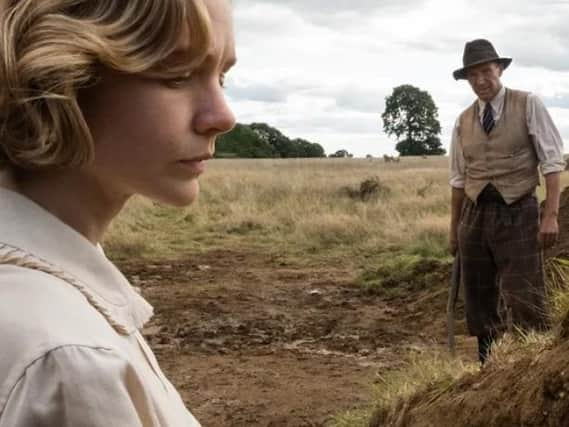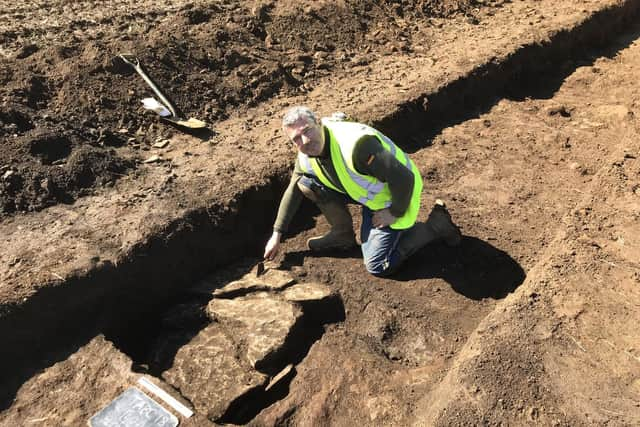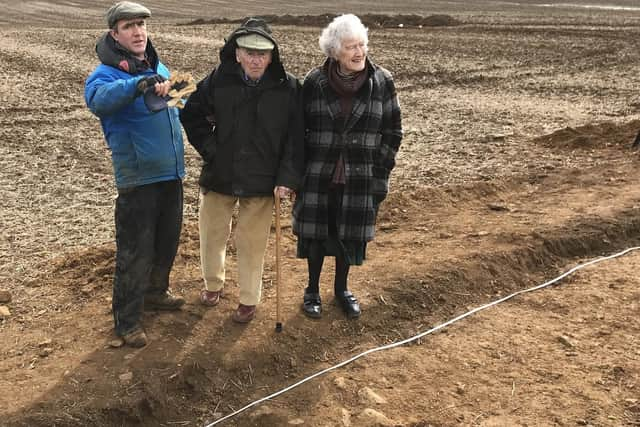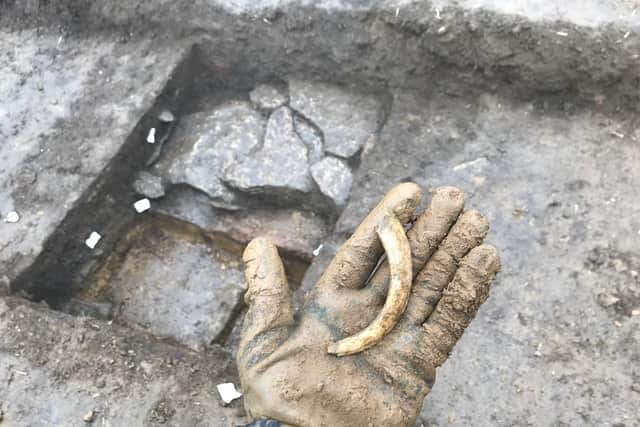Ralph Fiennes' new film mirrors the discovery of a huge Roman Villa by a Banburyshire historian


The Dig, made for Netflix, tells the story of amateur archaeologist Basil Brown (Ralph Fiennes) who discovers the Great Ship Burial at Sutton Hoo in 1939. It was one of the most important archeological discoveries of all time.
Two generations later, Banbury historian and detectorist Keith Westcott discovered one of the largest Roman villas in England at Broughton.
Advertisement
Hide AdAdvertisement
Hide AdAnd linking the two is the Fiennes family - for Ralph Fiennes is a cousin of the Fiennes family whose ancestral home is Broughton Castle on whose estate the villa was found.
The extraordinary finds are also linked through the modest but accomplished lives of the men who discovered them. Farmer's son Basil Brown left school at 13 and was a self-taught archaeologist; Keith Wescott left school at 15 to become an apprentice and sought out his own specialist knowledge through evening school and a passion for history.
As well as the Broughton Roman Villa, Mr Westcott was responsible for the discovery of the Broughton Hoard - a buried pouch of 16th and 17th century coins and declared Treasure Trove. The Spanish Silver coins are believed to be the property of Queen Henrietta Maria of England.
Advertisement
Hide AdAdvertisement
Hide AdThe two men, in their respective generations, made their discoveries using knowledge developed over decades and with values based on a great respect for the past.


Mr Westcott has gone on to be an award-winning course director and tutor, wining the prestigious United Kingdom 2019 Archaeology Training Forum Award, 2019 for his course at the University of Oxford: Metal Detecting for Archaeological Projects. He is in the process of setting up the first Institute of Detectorists.
Following the discovery of Boughton’s courtyard villa, which is almost as large as Buckingham Palace, he enrolled on the Archaeology in Practice course at Oxford followed by more specialised courses such as Stratigraphic Analysis (the study of rock layers and layering).
“The courses really opened my eyes to the need for archaeologically-based education for detectorists," he said. "Retrieved artefacts become pieces of an historic jigsaw puzzle but without proper records for finds by metal detectorists, it’s impossible to ever complete the puzzle.
Advertisement
Hide AdAdvertisement
Hide Ad"The interest in searching for and finding artefacts can often eclipse the importance of contextual information surrounding the find and the damage that can be done to an important archaeological record.


"It's 2021 and the surprising thing is, there's never been any education set up for metal detecting which is one of the biggest groups involved in heritage.
"There has never been any education or guidance for those digging on what might be historic sites. Our aim is to embed metal detecting into professional practice so the detectorist becomes part of the archiological team.
"And for those interested as a hobby, we want to get the detectorists to see the artifacts they find for their historic value rather than their monetary value. We support the existing code of practice for responsible detectorists and we will be providing education for detectorists at all levels," said Mr Westcott.
Advertisement
Hide AdAdvertisement
Hide AdThe Institute project is supported by all major heritage and land ownership bodies and has received funding from Historic England. It is working with Suffolk County Council Archaeological Service to produce an educational video on metal detecting.


"There are many opportunities for those who would like to take their love of history to a more tangible level in unearthing the past through helping on community digs or searching the countryside with metal detectors," said Mr Westcott.
"With the Covid-19 lockdowns there has been a resurgence of interests and hobbies related to history and heritage. There is still much to discover through research and sometimes a little imagination. Heritage is shared by all and historical value should always be the prime motivator."